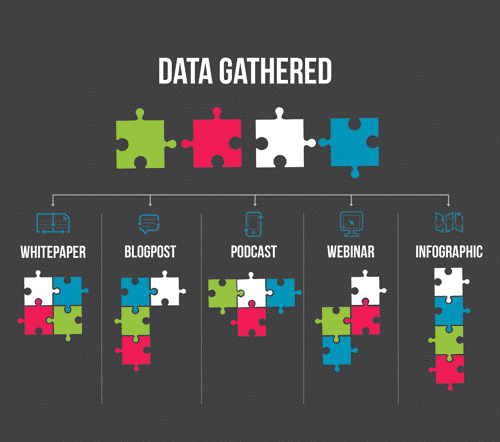Creating original content is resource-intensive. Repurposing lets you squeeze more value from every idea by adapting it to new formats, audiences and channels. The strategies below turn one great asset into a portfolio of touchpoints—without sacrificing quality or exhausting your team.
1. Turn Long-Form Articles Into Short-Form Video
- Highlight three key takeaways.
- Record a 60-second vertical video or use AI voice-over on stock footage.
- Publish on TikTok, Instagram Reels and YouTube Shorts with a link to the full article.
2. Slice Webinars Into Snackable Clips
- Identify moments that answer a single question.
- Add captions and your logo; export as 16:9 and 1:1 for different platforms.
- Embed clips in nurture emails or FAQ pages.
3. Convert Data Points Into Infographics
- Extract stats, quotes and charts from reports.
- Use Canva or Figma templates for quick layout.
- Offer the infographic as a social share graphic and gated PDF download.
4. Compile Blog Series Into an E-Book
- Group related posts by theme.
- Write an executive summary and add transition copy between chapters.
- Gate the PDF behind a minimal form to capture leads.
5. Transform Podcast Episodes Into Articles
- Auto-transcribe with AI, then edit for web readability.
- Insert timestamps and pull-quotes; embed the audio player for extended dwell time.
- Link back to the show notes to drive subscribers.
6. Reimagine Research Findings as LinkedIn Carousels
- Create a 5–7 slide PDF with bold headlines and one stat per slide.
- Add a CTA on the final slide to read the full study.
- Upload natively for algorithm reach; pin to your company page.
7. Feed Evergreen Posts Into AI Chatbots & FAQs
- Tag content by topic and intent.
- Sync the corpus to your on-site chatbot so users receive instant answers.
- Monitor query gaps and create net-new pieces where information is thin.
Content Repurposing Planning Checklist
- Audit existing assets for evergreen value and performance.
- Map each asset to buyer personas and funnel stages.
- Select formats that match the preferred channels of your target audience.
- Assign owners and deadlines; document in your content calendar.
- Create design and voice guidelines for consistency across formats.
Post-Repurposing Distribution Checklist
- Publish and optimise each format for its primary platform (titles, hashtags, metadata).
- Cross-link all derivative assets back to the cornerstone content.
- Schedule social amplification and email digests.
- Track KPIs by UTM code to measure lift from each derivative.
- Update dashboards and share learnings with the wider team.
Repurposing multiplies the impact of the expertise you already have. Follow the checklists above and your content will reach wider audiences, drive more conversions and keep paying dividends long after the original launch.
Need a scalable repurposing workflow? Our content strategists can audit your library and deliver a step-by-step plan.
